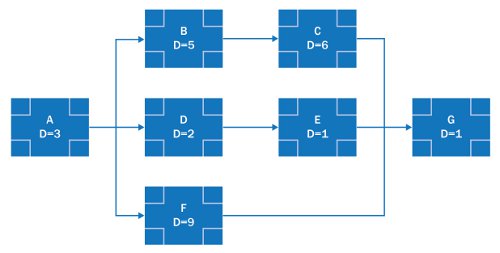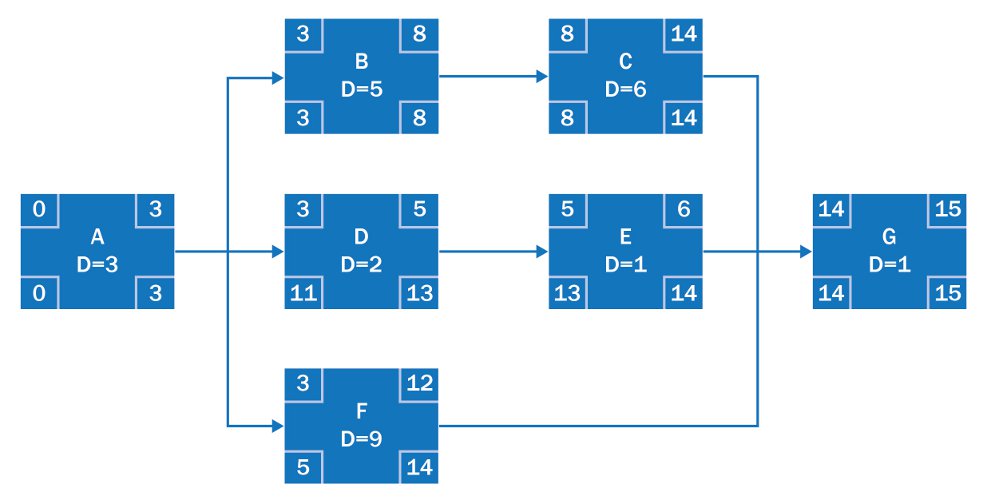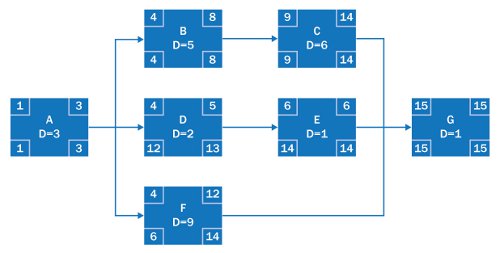Are you confused if you should start with 0 or 1 for critical path calculations? In short, both methods lead to the same results. Once you understand the reasoning behind each method, it will be your choice which one you find easier and faster for calculations. PMI will not trick you if you prefer one over the other, but it’s a good idea to know the logic behind each method.
Let’s use a very simple network diagram to create a critical path using both the methods.

Figure 1: Network Diagram
Let’s start with 0 as the ES of activity A and do a forward and backward pass. As shown below, the critical path is A-B-C-G and the total float for non-critical activities are D-8, E-8, and F-2.

Figure 2: Critical Path using 0 start
Similarly, starting with 1 as the ES of activity A and doing a forward and backward pass as shown below leads to the same results.

Figure 3: Critical Path using 1 start
So, what’s the difference in the logic?
While creating a network diagram it’s assumed the first task will begin on the morning of day 1 and finish by the evening (or end of day) of the finish date. The following task (FS relationship) will begin on the morning of the next day. For instance in Figure 3, A’s ES is the morning of day 1 and EF is the evening (or end of day) of day 3. So the next tasks, B, D, & F, start on the morning of day 4 and so on.
So, if we only know the ES and EF, we can see the task duration will be = EF – ES+1
That is the simple logic when we start with 1!
In order to avoid the confusion of thinking in terms of beginning and ending on a particular day on each task, some authors and trainers use 0 as the start of a critical path. With 0 as the ES of the first task, EF is simply equal to ES+duration. The ES of the following task (assuming FS relationship) is simply the EF of the preceding task and so on.
With this method, the task duration is simply= EF – ES.
